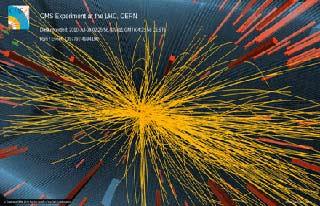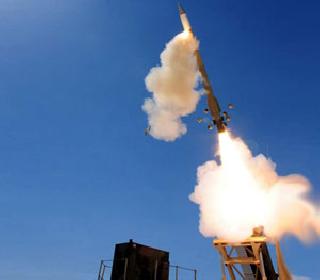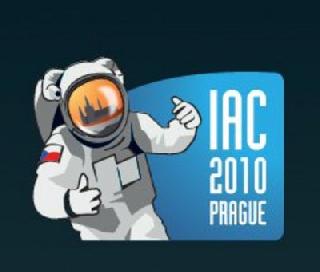
Image of a 7 TeV proton-proton collision in CMS producing more than 100 charged particles. Photo: CERN.
GENEVA (AFP): Scientists at the world's biggest atom smasher said Tuesday that they appeared to have discovered a previously unobserved phenomenon in their quest to unravel the deepest secrets of the universe.
Results from one of the detectors in the Large Hadron Collider experiment indicated that "some of the particles are intimately linked in a way not seen before in proton collisions," the European Organisation for Nuclear Research (CERN) said on its website.
"The new feature has appeared in our analysis around the middle of July," physicist Guido Tonelli told fellow CERN scientists at a seminar to present the findings from the collider's CMS (Compact Muon Solenoid) detector.
"We have submitted a paper to expose our findings to the wider (scientific) community," he added, underlining caution and the need for the peer review outside CERN.
Nonetheless, Tonelli, a physicist from Italy's University of Pisa and scientific spokesperson for the CMS detector, underlined that during weeks of cross-checks and critical debate among the team, "we didn't succeed to kill it."
The phenomenon showed up as a "ridge-like structure" on computer mapping graphs based on data from billions of proton collisions in the 3.9-billion-euro (USD 5.2-billion) machine.
The 27-kilometre circular particle accelerator buried under the French-Swiss border is recreating powerful but microscopic bursts of energy that mimic conditions close to the Big Bang that created the universe.
The CMS, one of six experiments around the accelerator, is designed to search for for the elusive and so far theoretical Higgs Boson, commonly nicknamed the "God Particle".
It is also aimed at shedding light on components of dark matter, the mysterious invisible void that makes up 26 per cent of the universe.
MIT physicist Gunther Roland, one of the authors of the paper submitted for review, described the latest observation as a "a subtle effect in a complex environment -- careful work is needed to establish its physical origin."
"What we really hope to get is not just ideas, but how to test it," he added during the seminar at CERN's headquarters on the edge of Geneva.
 Previous Article
Previous Article Next Article
Next Article













The Indian Air Force, in its flight trials evaluation report submitted before the Defence Ministry l..
view articleAn insight into the Medium Multi-Role Combat Aircraft competition...
view articleSky enthusiasts can now spot the International Space Station (ISS) commanded by Indian-American astr..
view article